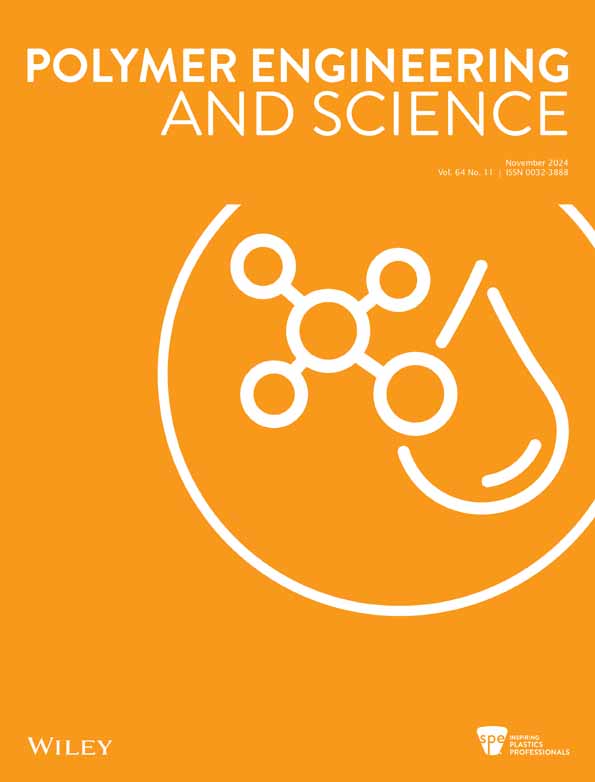软段性质对形状记忆聚氨酯热机械性能的影响
IF 3.2
4区 工程技术
Q2 ENGINEERING, CHEMICAL
引用次数: 33
摘要
形状记忆聚氨酯(SMPU)由于其在生物医学、纺织和航空航天等不同领域的应用,代表了一类非常有趣的材料。此外,只要适当选择其组分的化学结构,就可以合成各种具有不同分子结构的聚氨酯。在这项工作中,描述了软段对形状记忆聚氨酯的热机械性能和形状记忆行为的影响。该合成基于两步聚合,由两种不同的软链段制备:聚(氧基四亚甲基)二醇(PTMG)或聚乙二醇(PEG)。根据所获得的分子结构,通过热重分析(TGA)、差示扫描量热法(DSC)和动态力学分析(DMA)研究了材料的不同性质。此外,分别通过视觉监测形状恢复过程和通过热机械分析(TMA)定性和定量地确定热激活SMPU的形状记忆响应。所有开发的组合物都显示出良好的形状记忆行为,回收率高于99.8%。ENG.SCI。,2017。©2017塑料工程师协会本文章由计算机程序翻译,如有差异,请以英文原文为准。
Influence of the soft segment nature on the thermomechanical behavior of shape memory polyurethanes
Shape-memory polyurethanes (SMPUs) represent a highly interesting class of materials due to their applications in different sectors such as biomedical, textile, and aerospace. Moreover, it is possible to synthesize a variety of polyurethanes with different molecular architectures just choosing properly the chemical structure of their components. In this work, it is described the influence of the soft segment on the thermomechanical properties and shape memory behavior of shape memory polyurethanes. The synthesis, based on two-step polymerization, was prepared by two different soft segments: poly(oxytetramethylene) glycol (PTMG) or polyethylene glycol (PEG). Depending on the molecular architecture achieved, the materials present different properties that were studied by thermogravimetric analysis (TGA), differential scanning calorimetry (DSC) and dynamic mechanical analysis (DMA). Furthermore, the shape memory response of thermally activated SMPUs is determined qualitative and quantitatively by visually monitoring the shape recovery process and by thermomechanical analysis (TMA), respectively. All developed compositions have shown good shape memory behavior, with recovery ratios higher than 99.8%. POLYM. ENG. SCI., 2017. © 2017 Society of Plastics Engineers
求助全文
通过发布文献求助,成功后即可免费获取论文全文。
去求助
来源期刊

Polymer Engineering and Science
工程技术-高分子科学
CiteScore
5.40
自引率
18.80%
发文量
329
审稿时长
3.7 months
期刊介绍:
For more than 30 years, Polymer Engineering & Science has been one of the most highly regarded journals in the field, serving as a forum for authors of treatises on the cutting edge of polymer science and technology. The importance of PE&S is underscored by the frequent rate at which its articles are cited, especially by other publications - literally thousand of times a year. Engineers, researchers, technicians, and academicians worldwide are looking to PE&S for the valuable information they need. There are special issues compiled by distinguished guest editors. These contain proceedings of symposia on such diverse topics as polyblends, mechanics of plastics and polymer welding.
 求助内容:
求助内容: 应助结果提醒方式:
应助结果提醒方式:


